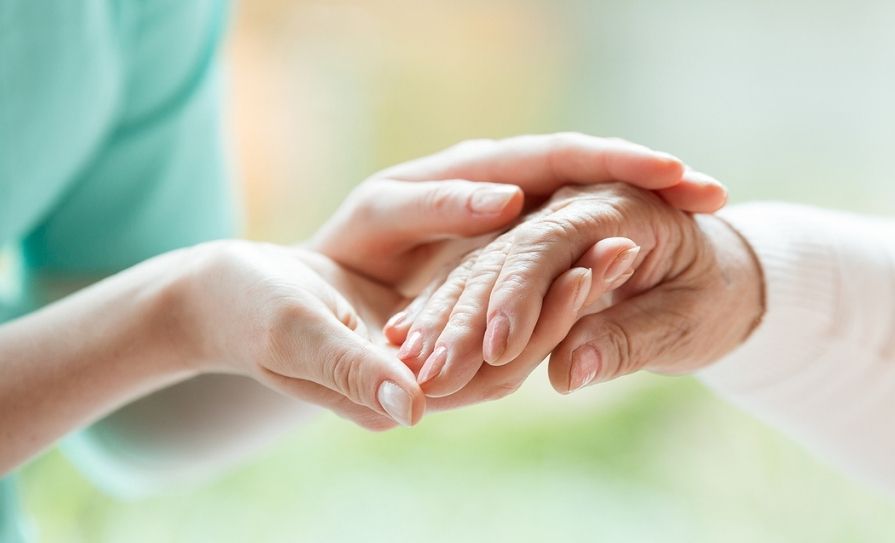Should a no-fault compensation scheme be considered by all health services, asks Terry Maguire
The cost of compensation
In the year 2023-24, the UK’s NHS paid out, directly from its annual budget, a staggering £3.2 billion in medical compensation, up 10 per cent year-on-year. For Northern Ireland alone, with a population of 1.9 million, the figure is about £110 million — this is from a budget of £4.5 billion, which is over 2 per cent of the total budget.
This is already a huge amount of money but, in addition, the NHS is also required to fund the care of those impacted by its medical mistakes. It’s a double hit — and some might argue unsustainable at a time when the health budget is not keeping pace with patient needs and demands.
Indeed, compensation claims may be one of the key reasons why the NHS is failing to invest in the transformation to improved care — which in turn will help people to get better quicker and, consequently, rely less on the service. As well as improved efficiency, more transformation would also raise standards, and higher standards reduce the risk of mistakes.
Frail elderly in the Emergency Department
It is often when considering the experience of ordinary patients that we appreciate how unresponsive our Health Service is in caring for their needs.
I am currently helping the family of an elderly patient who lives in poor health. Unable to stand or move unaided, she needs increasing care and attention.
A few months ago, she was relatively independent and able to live alone with a package of care that consisted of four short daily visits from highly supportive and caring staff.
Over the summer, unfortunately her needs have become much greater. She is lucky to have a daughter close by who has, more or less, left her own home and her family commitments to move into her mother’s home to help take care of her.
Requests for additional support remain unactioned, as the elderly woman’s key social worker is still waiting for a care assessment which has been scheduled but is, as of yet, uncompleted. The family are stoical and uncomplaining, recognising their responsibilities for their frail elderly mother who, in spite of the ravages of age, retains a quiet dignity.
Her caring family are met with a lack of competence when seeking the required level of care and support for their mother. The family are happy to pay privately for support but that option is, they are told, not available and she remains on a waiting list for a care home.
The elderly woman’s failing health is accompanied by frequent acute medical events. She has suffered repeated and serious kidney infections in recent months due to chronic kidney disease, infections with such severe symptoms that she was hospitalised three times since July.
Each visit has been the same. An ambulance is called and the woman is transferred to the Emergency Department (ED) of the local area hospital. Her daughter accompanies her mother, who remains on a chair/trolley for three-to-four days. She is only transferred to a ward on day four or five and is then discharged between day five and day seven.
Being in ED, particularly at a weekend, is not for the faint-hearted. Sitting on a chair in a crowded corner by a nursing station, with one or two very disruptive and belligerent patients, makes for a very long, uncomfortable, and sleepless night. Difficult enough when you are well — frightening and agonising when you are seriously ill.
Once she is admitted to a ward, her family are more reassured, but then they are told the Acute Medical Unit has resolved their mother’s clinical needs. And since there is nothing more that they can do medically, she is discharged. The family were hoping their mother would be entitled to a care facility for a period of respite and recovery, but instead she has been abruptly discharged during an unsuspecting family member visit.
On two occasions, she has been lifted into a car by hospital staff to be driven home without her package of care being restarted. The key objective of Acute Medical Units, it seems, is to effect discharges above any other priority. There must be a more humane way to treat frail, elderly patients.
Fighting for care at home
Back home with her confused family, they struggle to address her increased needs. The experience at ED on each of these three occasions was so dreadful and shocking that the family, in agreement with their mother, have decided never to return.
A week later, however, symptoms return and one morning when getting out of bed at 6am, supported by her daughter, the mother slips and falls onto the carpet. The daughter is unable to lift her, calls over other family members, and finally the elderly woman is put back into bed.
This event is causally related to care staff arriving at 9am, who immediately report the incident and are told to stop all care until an x-ray confirms no broken bones. They leave. The GP is phoned but insists on attendance at the ED or an acute care facility. She can’t help. The family attempt to book an appointment at an Acute Care facility but require an ambulance.
A more assertive family member asks the triage nurse to simply confirm an x-ray is unnecessary given the context of the slip. She cannot — the only person is the GP. So, the GP is phoned and, when finally contacted, says that without an examination, she can’t make a call on it. The family are firm — their mother is going nowhere. Within an hour, a young GP is at the family home, has completed a thorough examination, and is satisfied nothing has been broken. The care package is resumed.
That afternoon, a nurse arrives to take bloods requested as a follow- up to the woman’s last ED visit. Next morning, the GP calls — based on the blood tests, the elderly woman is in kidney failure and needs to go to ED urgently. The daughter refuses, the GP insists, and after a Mexican standoff the GP arranges for Hospital at Home to visit. Within a few hours, a drip is set up and over the weekend a blood test indicates that all is back to normal and the patient is much improved.
The family are, of course, delighted with the Hospital at Home service, yet wonder why this was not offered before. It is the exception but should be the standard for elderly acute care.
A Health Service for whom?
This is sadly not an isolated story. The health service is unresponsive to patients’ needs, instead supporting the system itself which creates extreme inefficiencies, and defensive medicine is core to this inefficiency. No-one seems willing to make a decision to help a patient, rather decisions seem focused on protecting the service and vicariously the staff.
I understand this and we all share responsibility for creating this culture. We are much too quick to blame the service and take action against practitioners when things go wrong. Of course, there is medical malpractice where individuals and departments fail to perform to an acceptable standard resulting in patient harm. However, these frequently result in compensation that drains the service of much-needed cash.
A no-fault compensation scheme
We need to move to a no-fault compensation system such as in New Zealand, where patients and families generally cannot sue the health service for medical negligence. Instead of litigation, patients are eligible to claim government- funded compensation through the Accident Compensation Corporation (ACC) for injuries arising from healthcare. You can also lodge a formal complaint with the relevant health authority or professional body for perceived wrongdoing and bring individuals to account for their poor performance.
The ACC system is one of the simplest in the world for patients to navigate. Straightforward claims are processed in weeks, with all decisions made within nine months, and a fixed award structure ensures that similar injuries receive similar compensation.
Historically, the ACC has paid out about 40 per cent of claims in four categories:
1. Treatment and rehabilitation, including the cost of disability aids, home modifications, and vocational retraining;
2. Compensation for loss of earnings (up to 80 per cent of earnings at the
The ACC system is one of the simplest in the world for patients to navigate
time of injury, up to a set maximum);
3. One-time lump sum compensation of up to US$70,000; and
4. Support for surviving spouses and children under 18.
The system, funded through general taxation and an employer levy, is remarkably affordable. To date, compensation for medical injuries has cost just £20 million — for a population of about four million. Several factors contribute to the system’s affordability:
- New Zealanders benefit from a strong health and welfare system that covers many of the damages typically at issue in a compensation claim;
- Compensation awards are generally lower than under a malpractice system;
- Many entitled patients never seek compensation;
- The ACC’s low administrative costs account for only 10 per cent of expenditures, compared with a typical-50 to-60 per cent under a malpractice system.
In the 1990s, New Zealand addressed concerns that a no-fault system amounted to a ‘no accountability’ system.
A ‘no fault’ compensation scheme in the UK would save much of the money absorbed by medical claims while still providing the necessary checks and balances in the system. It would then allow significant funding to stay in the system to help ensure patient-focused care and a reduction in bureaucratic service provision. We could then afford the much wished-for transformation.
But even if a system like this is implemented, it will be too late for this elderly lady, who is likely to pass away in the near future. I can only hope that she is afforded the dignity that she deserves in the last stage of her long life.
Terry Maguire owns two pharmacies in Belfast. He is an honorary senior lecturer at the School of Pharmacy, Queen’s University Belfast. His research interests include the contribution of community pharmacy to improving public health.







